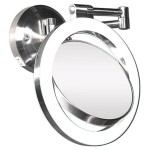How to Mirror Your iPad to Your Mac
Mirroring an iPad's display to a Mac offers significant advantages for presentations, demonstrations, content sharing, and even app development. This process replicates the iPad's screen content onto the larger Mac display, allowing for enhanced visibility and interaction. Several methods facilitate this mirroring functionality, each offering unique features and benefits.
One common approach utilizes the built-in AirPlay technology. AirPlay, Apple's proprietary wireless streaming protocol, enables seamless streaming of audio and video content between compatible devices, including iPads and Macs. To initiate screen mirroring via AirPlay, ensure both the iPad and the Mac are connected to the same Wi-Fi network. This shared network connection is essential for AirPlay to function correctly.
On the iPad, access the Control Center by swiping down from the top-right corner of the screen. Locate and tap the "Screen Mirroring" icon. A list of available AirPlay receivers, including the Mac, should appear. Select the Mac from the list to initiate the mirroring process. The iPad's screen content will then be replicated on the Mac's display.
Certain Mac models and macOS versions might require enabling AirPlay receiver functionality. This option can typically be found within the "Sharing" preferences pane in System Preferences. Users should consult Apple's support documentation for specific instructions related to their Mac model and macOS version.
Another method for mirroring an iPad to a Mac involves using a wired connection. This approach proves particularly useful in environments with unreliable Wi-Fi or when a more stable, latency-free connection is required. A USB cable with Lightning or USB-C connectivity (depending on the iPad model) and a compatible adapter, if necessary, are required.
Connect the iPad to the Mac using the appropriate cable. Specific software might be required to facilitate the mirroring process. Applications like QuickTime Player, for example, offer screen recording functionality that includes an option to select the connected iPad as the video source. This effectively mirrors the iPad's display to the Mac through the wired connection.
Third-party applications also offer screen mirroring capabilities. Several software options available in the Mac App Store or directly from developers provide advanced features beyond basic screen mirroring. Some applications might offer features like screen recording, annotation tools, or enhanced performance for specific tasks like game streaming.
When choosing a third-party application, consider factors such as cost, features, and user reviews. Evaluating these aspects helps determine the application best suited to individual needs and requirements. Ensure the chosen application supports the iPad model and macOS version in use.
Troubleshooting common mirroring problems is often straightforward. If no AirPlay receivers appear, verify both devices are on the same Wi-Fi network and that AirPlay is enabled on the Mac. For wired connections, ensure the cable and any necessary adapters are functioning correctly. Restarting both the iPad and the Mac can sometimes resolve connectivity issues.
Performance considerations also play a role in the mirroring experience. While AirPlay generally performs well, large video files or graphically intensive applications might introduce some latency. Wired connections typically offer better performance for demanding tasks. Adjusting the resolution of the mirrored display on the Mac can also impact performance; lowering the resolution can improve responsiveness if necessary.
Choosing the right mirroring method depends on specific needs. AirPlay provides a convenient wireless solution, while wired connections offer greater stability and performance. Third-party applications can provide enhanced features but might introduce additional cost and complexity. By understanding the available options and their characteristics, users can select the method best suited for their particular scenario.
Mirroring provides opportunities for enhanced productivity and collaboration. From delivering presentations to sharing content with colleagues, mirroring facilitates communication and interaction. In educational settings, mirroring allows teachers to project educational apps and content for student engagement. App developers can also utilize mirroring for testing and demonstration purposes.
Regardless of the chosen mirroring method, understanding the basic setup and troubleshooting procedures ensures a smooth and effective experience. Consulting Apple's support documentation or the specific instructions provided by third-party application developers offers valuable guidance for resolving any potential issues. By leveraging these resources, users can optimize the mirroring process and take full advantage of its benefits.

3 Ways To Share An Ipad Screen On A Mac 2024 Movavi

How To Share Ipad Screen On Mac Via Usb Or Wifi

2024 Screen Mirroring Mac To Ipad Most Common Solutions

How To Extend Or Mirror A Mac Screen An Ipad With Sidecar Pcmag

Use Ipad As A Second Display Apple Support

How To Mirror A Mac An Ipad

Use Ipad As A Second Display For Your Mac Apple Support In

How To Mirror A Mac An Ipad

5 Effective Ways How To Mirror Your Ipad Screen Pc

How To Use An Ipad As A Second Monitor Connect Mac Screen Macworld








